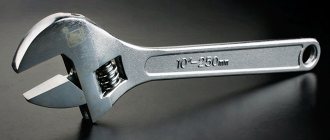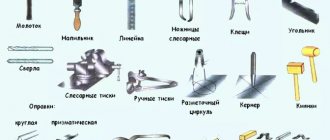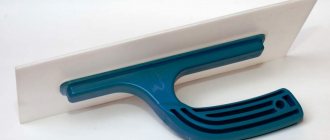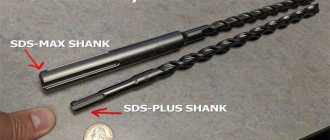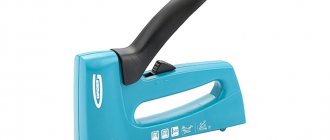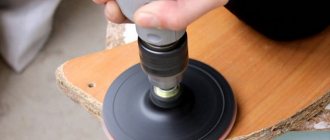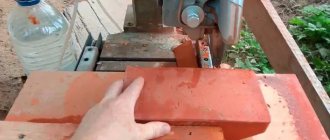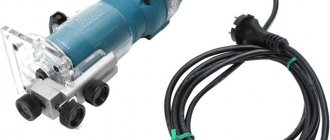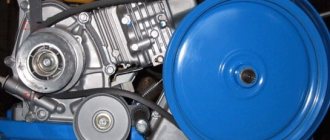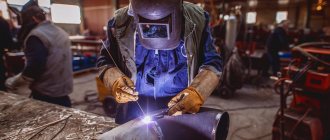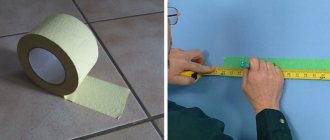Types of brushes
- Fly brushes (KM) are huge fluffy brushes made of natural fibers and with the addition of synthetics (nylon), and have a round shape. Their diameter is 60-65 mm, and the length of the hairs reaches 180 mm. Typically used for painting large surfaces, washing or for whitewashing work. They are highly resistant to contact with various solvents and other aggressive substances, tolerate high temperature changes and are not afraid of hot water. When interacting with the work surface, they bend a little, but then immediately straighten.
- Mock brushes (KMA) are an improved type of brushes that I use for applying adhesive or casein paint to various surfaces. They are based on natural horsehair (50%) and artificial bristles (nylon 50%), which allows you to evenly apply a layer of coating to a specific surface. There are two types of such brushes: round and rectangular. Their diameter is 120-170 mm, and the length of the hairs is 100 mm.
- Hand brushes (KR) are small round brushes used for painting wooden windows or pipes. Their diameter ranges from 26 to 54 mm. They consist of pure bristles and horsehair and have a round shape. The center of this tool is empty, allowing it to accumulate paint material. It is not recommended to use with adhesives and lime substances, since the hairs are held on an adhesive base. Usually this tool is simply called a round paint brush.
- Filet brushes (FKF) are small brushes with a fairly comfortable handle and coarse white bristles. They are used on small surfaces to outline lines and paint hard-to-reach areas. The diameter of the brush is 6-18 mm.
USEFUL INFORMATION: Ultraviolet filters for water purification
- Radiators are a wonderful device for applying paint to hard-to-reach places: seams or bends. The name itself suggests that they are ideal for painting batteries (radiators).
- Flat paint brush (KF) is a flat, wide brush from 25 to 100 mm with a comfortable handle. It is made of bristles and badger hair. Ideal for eliminating smudges that may have occurred from other brushes.
- A synthetic flat brush (KS), or a flat brush with artificial bristles, is a synthetic brush. It has a special property: its fibers, unlike natural fibers, retain their original (even) shape during use. It is great for paints diluted with water. Such a tool ideally holds the composition not only on the outer part of the nylon fibers, but also in their inner base.
- A crosscut brush (SCB) is a hard and very stiff brush, which consists of spinal or semi-spinal bristles. They are used to finish freshly applied paint. It very effectively eliminates all irregularities caused by other devices.
Note: Spine bristle brushes are shaped like a cone, which allows them to capture more paint and apply it evenly to the surface.
Types of tool pile
When choosing a brush, pay attention to the material of the bristles. She may be:
- Natural - pig or horse hair;
- Artificial - nylon, polyester fibers;
- Combined.
Types of bristles
Natural fiber bristles are ideal for painting work; they hold the composition well, applying it in an even layer. It feels a little rough to the touch, which allows it to absorb more paint. This is what distinguishes it from artificial (nylon) hairs.
Bristles made of synthetic materials consist of polymers and have a small thickness. Different types of modern polymers allow you to achieve the desired rigidity. Nylon polyester bristles are perfect for water-intensive paints; their hairs do not absorb the paint material; nylon repels moisture and retains its original structure. In addition, nylon is better suited for painting timber without leaving lint on it.
USEFUL INFORMATION: Different types of floor primers
Mixed bristles are usually considered to be those that consist of natural and synthetic fibers (usually nylon). This approach improves the elasticity and wear resistance of the paint brush.
Bristle.
The bristles of the brushes are made from pig ear hair. The elastic bristles are subjected to special treatment and bleached; only then is it suitable for the manufacture of professional art brushes. Brushes come in flat and round shapes and are great for working with acrylic and oil paints, as well as gouache using dry techniques. These brushes are quite convenient for drawing detail, as well as covering large surfaces with varnish. The bristles have an ivory color and the ability to hold paint well. (glaze)
Proper brush care: tips
If you care about your tools and want them to serve you as long as possible, then you need to follow certain rules for their storage and use. New or unused paint brushes should be washed with hot water and a little soap to remove dust and broken fibers from the bristles. After this, the bristles are squeezed out and dried.
Before starting painting work, it is necessary to soak the bristles so that they absorb moisture, softening and increasing in volume. In this simple way you can achieve a smoother and more even application of paint.
Before starting painting work, the tool must be developed so that it takes the correct shape. To do this, take a little paint mixture and the brush itself; use any rough coating (brick, plaster, concrete) as a test surface. This way, the hairs will find the correct shape for further work. It is better to clean the working surface of all excess.
It is very important to use the tool correctly. For example, a round brush on a work surface should be gradually rotated in your hand so that its hairs are erased evenly. You don't need to press it hard.
There are times when a person is simply physically unable to work through the entire surface. Naturally, he needs rest. At this time, the brush can be left in the paint or immersed in a special solution. If glue, lime, oil and casein solutions are used, then soak the tool in water. For kerosene, turpentine or drying oil compositions, it is recommended to use special solvents.
Very important: You do not need to immerse the brush completely, but only to the depth where the bristles lightly touch the bottom, otherwise the hairs will bend or break; it is best to hang them on a wire or other device.
How to wash your brushes? To do this, take kerosene, and then use water and soap. Such simple procedures should be continued until the water stops being colored, remaining clean. At the final stage, we hang them up and dry them. The cleaning process is complete.
How important is brush shape?
Most people are used to saving their resources by using old tools since time immemorial, but this is completely wrong. You just think you're saving money, but you're not. For example, you can paint one surface all day with a small round bristle brush. It is much more profitable to purchase a large flat brush, which will paint an impressive surface in one stroke.
USEFUL INFORMATION: Anaerobic sealants for threaded connections
A small round brush is more suitable for a small work surface. This tool allows you to coat special areas such as round pipes. For hard-to-reach places, it is recommended to use so-called angled brushes. It is important to remember that, first of all, you save time.
How to choose the right painting tool?
Before purchasing a tool, the question arises: how to make the right choice? In fact, there is simply no multifunctional brush; different brushes are used for each situation. Builders prefer to use natural materials rather than polymers, but natural fibers are not always better than nylon. For example, synthetic brushes are purchased for mixtures with a water base; their nylon hairs tend to repel moisture. A round brush is good for small areas, while flat brushes are good for walls and other flat surfaces.
Form.
There are a lot of different brushes for painting. All of them are designed to work with different materials and for different types of work. The most popular round brush, depending on the size, the brush can serve as a filler or as a tool for miniature work thanks to its thin tip. Flat brushes are convenient for working on a large surface and applying the background. Oval brushes usually play the role of a flat brush, but when used correctly they can change the width of the stroke. Flat brushes with short bristles are called contour brushes: they are convenient for detailed work. With flat fan brushes it is very convenient to shade or create textured moments on the canvas. Linear brushes (liners) have thin, elongated hair; due to the length of the bristles, the brush can absorb quite a lot of paint and allows you to draw long lines without additional addition. A flat cat tongue brush helps blur the edges of objects.
